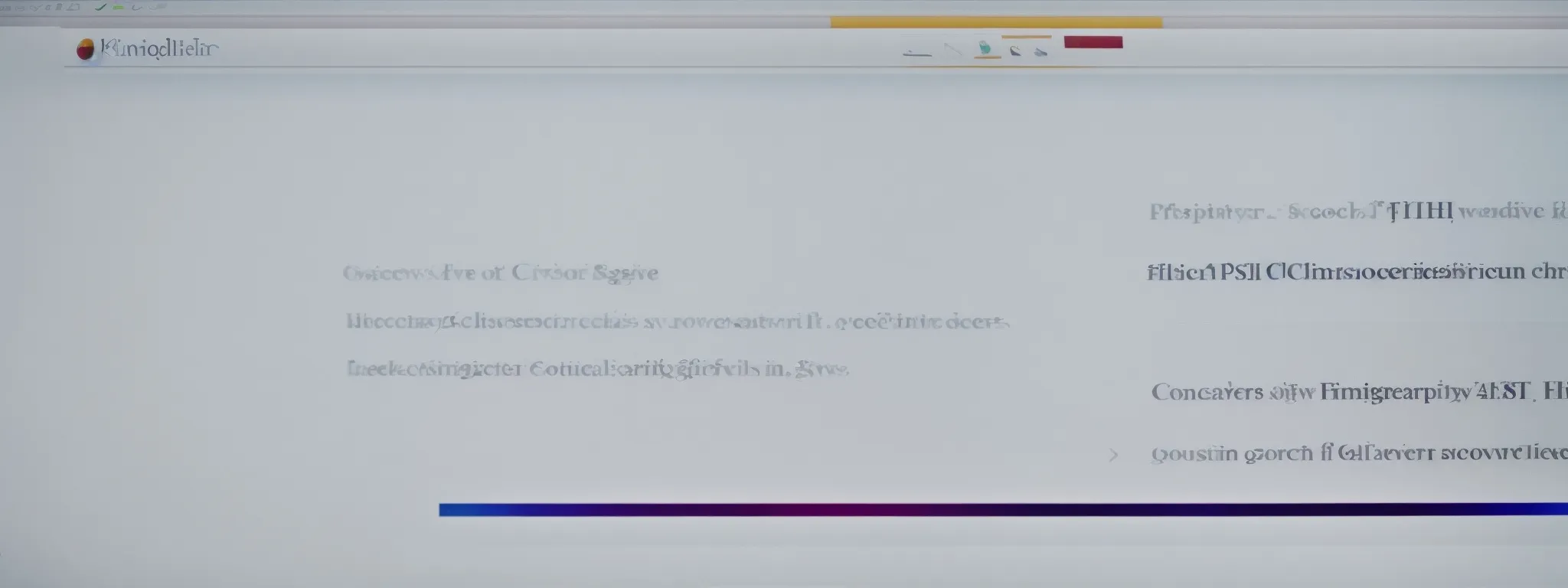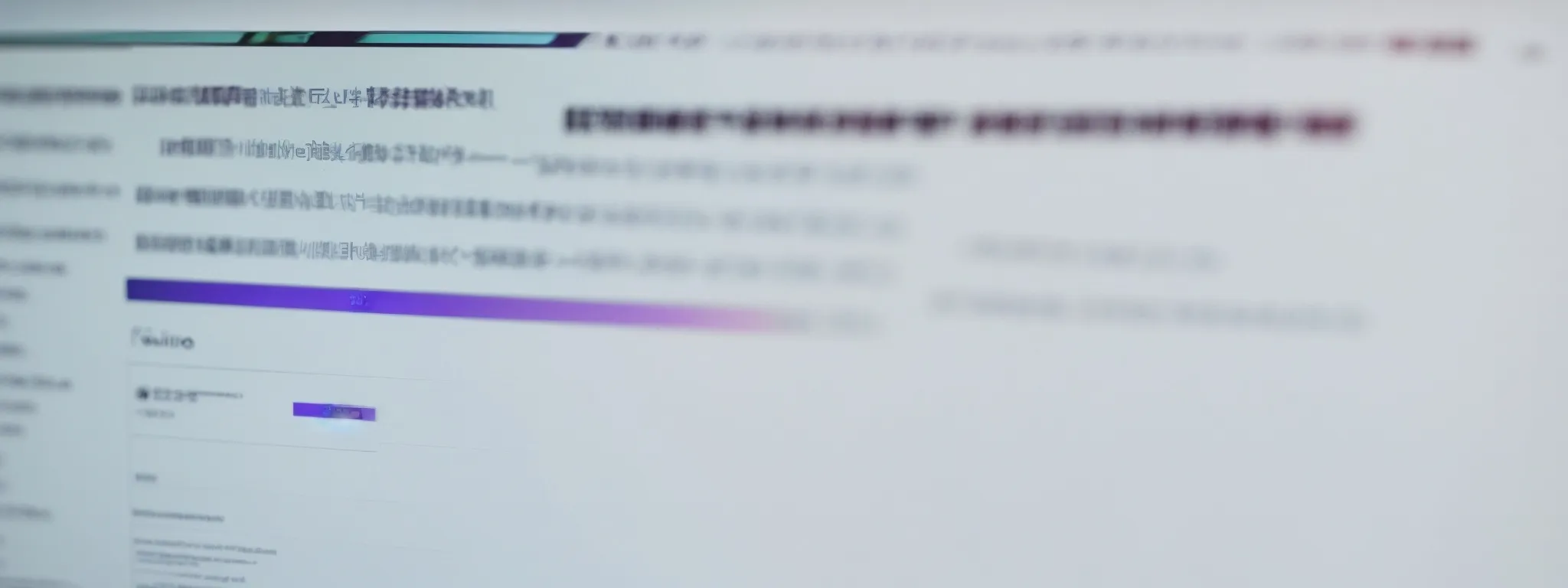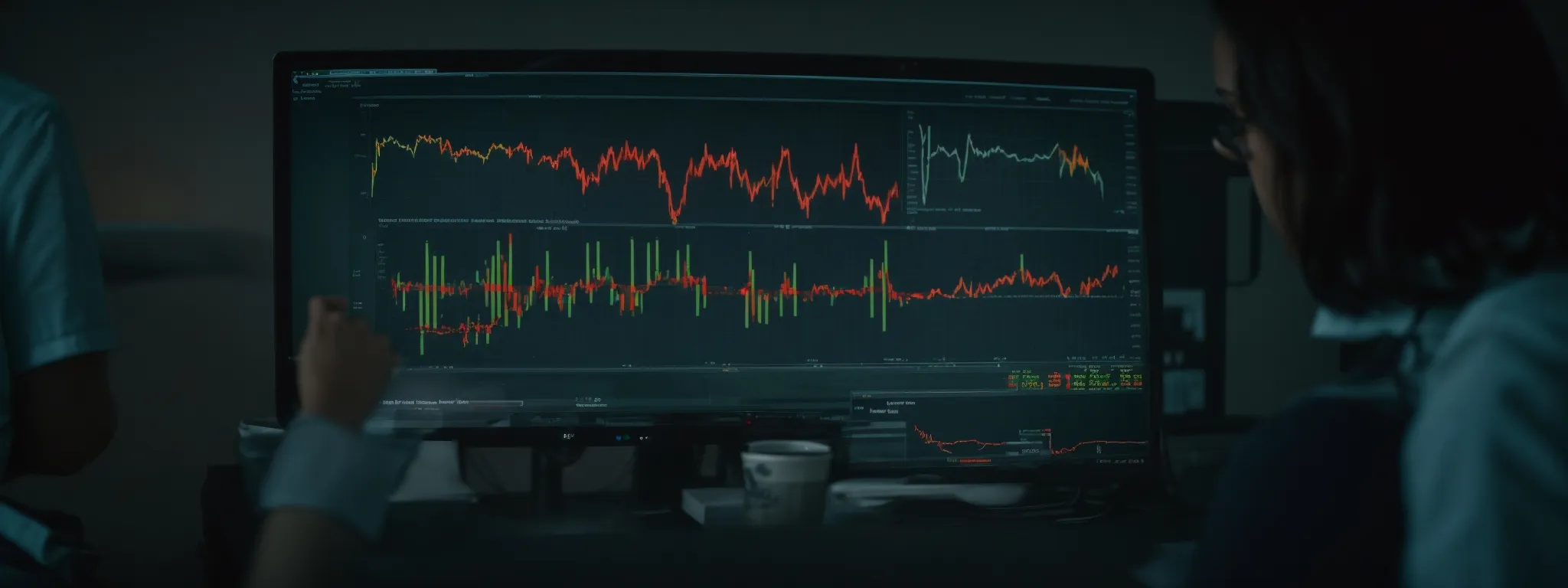Title Tag Length for SEO
Optimal Title Tag Length for SEO Best Practices The delicate balancing act of crafting the perfect title tag is an art form, revered among SEO professionals for […]
Optimal Title Tag Length for SEO Best Practices
The delicate balancing act of crafting the perfect title tag is an art form, revered among SEO professionals for its nuanced contribution to search engine results.
While the character limit seems a trivial detail, it stands as a crucial component in gripping the attention of users and algorithms alike.
With LinkGraph’s SEO services, mastering title tag length translates into a symphony of relevancy and brevity, striking the right chord with search engines and potential customers.
This article elucidates the myths and unveils the truth behind effective title tag optimization.
Keep reading to unveil the strategic finesse required for honing your title tag’s length to SEO perfection.
Key Takeaways
- Title Tags Are a Critical SEO Element That Impact SERPs and User Engagement
- Optimal Title Tag Length Typically Ranges Between 50-60 Characters to Avoid Truncation
- LinkGraph Uses SearchAtlas SEO Software to Balance SEO Optimization With Readability for Title Tags
- Title Tag Effectiveness Is Informed by Data-Driven Strategies, Including Visibility and Engagement Metrics
- Tailoring Title Tags Involves More Than Character Count, Focusing on Keywords and Narrative Quality
Understanding the Ideal Title Tag Length for SEO

In the constantly evolving landscape of Search Engine Optimization, the potency of a meticulously crafted title tag cannot be overstated.
Serving as a pivotal HTML element, the title tag bears significant weight in both user experience and search engine result pages (SERPs).
It succinctly informs users and search engines alike of the page’s content, influencing click-through rates (CTR) and organic traffic.
The length of this critical SEO element, therefore, demands Strategic Consideration.
Professionals at LinkGraph skillfully balance brevity with descriptive precision, optimizing title tag length to meet the best practices that enhance search performance.
The Significance of Title Tag Length in Search Performance
LinkGraph’s seasoned experts understand that the title tag serves as a brief yet potent billboard for web pages in the competitive marketplace of Google search results. An Optimal Title Tag Length ensures that the full message is displayed on SERPs, thereby preventing important information from being obscured and maximizing the visibility of the brand’s unique value proposition.
Given the title tag’s capacity to directly impact the user’s decision to click, LinkGraph champions adherence to title tag character limits that align with best practices—typically between 50-60 characters. This precise calibration ensures that searchers receive a complete, not truncated, user-centric page insight which can demonstrably improve CTR and fortify organic traffic metrics.
Best Practices for Determining Optimal Length
The quest for title tag perfection is nuanced, merging data-driven insights with a command of the search landscape. Acknowledging that desktop and mobile devices display title tags differently, LinkGraph’s team leverages in-depth research to forge title tags that are responsive to all devices. This ensures visibility and relevance across the spectrum of user access points.
Striking the right balance in title length pivots on the intersection of SEO and user-focused clarity. Experts at LinkGraph deploy the SearchAtlas SEO software to distill the essence of a web page into a succinct title that adheres to Google’s prescribed title tag length, typically truncating around 60 characters on SERPs:
- Analyze current SERP titles for length patterns
- Utilize SearchAtlas software to replicate conditions and test character display
- Apply readability tools for SEO to enhance title tag articulation
How Character Count Influences Title Tag Effectiveness

Title tags, those decisive snippets of text defining the essence of a web page, significantly influence user engagement—a brief yet impactful part of a search engine’s anatomy that beckons a user’s attention within the crowded search arena.
LinkGraph’s meticulous SEO services recognize the intricate balance between title length and its subsequent visibility on search result pages.
The team at LinkGraph systematically assesses the correlation between tag length and user interaction, recognizing that exceeding the invisible threshold of title tag visibility can affect both the user experience and a brand’s digital footprint.
This precise attention to detail guides the creation of title tags that not only pique the interest of prospective visitors but also align succinctly with the search engine’s display parameters.
The Relationship Between Title Tag Length and User Engagement
The nuanced dance between title tag length and user engagement is a chorus well-known to the astute practitioners at LinkGraph. Recognizing that every character counts, they craft title tags to capture attention swiftly, knowing that a title’s brevity and clarity can entice a searcher to choose one link over another.
Expertly executed, a title tag of optimal length, as determined through the methodical approach at LinkGraph, directly correlates to heightened user interest. The crisp, informative nature of an adequately sized title tag can lead to improved engagement metrics, such as increased click-through rates and page views:
- Short, descriptive titles facilitate quick user comprehension.
- Optimally sized title tags avoid undesirable omissions on the search results page.
- Clear title tags enhance the relevance of search results, fostering user trust.
Analyzing the Limits of Title Tag Visibility in Search Results
Analyzing the intrinsic parameters of title tag visibility yields a pivotal understanding for brands aiming to secure a commanding presence in search engine results. The team at LinkGraph navigates the subtleties of search engine algorithms and user behavior to ensure the title tags it constructs are visible and effective within the finite real estate of browser tabs and search engine result pages.
To maintain the integrity and impact of the title tag, LinkGraph adopts a strategic approach—Meticulously Avoiding Truncation that can obliterate vital brand identifiers or compelling calls to action. This delicate balance is maintained by conscientious observation of title tag length, cognizant of the fact that visibility varies not only by the device but also by the search engines interpreting the HTML code:
- Analyze optimal visibility thresholds across multiple search engines.
- Examine the influence of different devices on title tag display limits.
- Observe user interaction patterns to refine title tag effectuality.
Crafting Title Tags Within the Sweet Spot for SEO

In the realm of digital marketing, the art of tailoring title tags to the sweet spot of SEO best practices is both a science and a craft.
Professionals at LinkGraph navigate this interplay with precision, identifying the typical range for optimal title lengths that search engines favor and users appreciate.
The strategies deployed focus on condensing the core message of a page into a title tag that is concise yet richly descriptive.
This approach not only aligns with the technical constraints of SERPs but also with the cognitive preferences of an audience, striking a balance that is critical for enhancing search visibility and engagement.
Identifying the Typical Range for Optimal Title Lengths
At the core of LinkGraph’s strategy is the recognition that the ideal range for title tag lengths is not arbitrary but informed by Empirical Evidence. Their analysis, through utilising advanced tools like SearchAtlas SEO software, has consolidated an understanding that a title tag with 50 to 60 characters often strikes the optimal balance, avoiding truncation while ensuring that essential information captivates the audience.
This informed approach allows LinkGraph to Tailor Title Tags with surgical precision, enhancing legibility and relevance in the eyes of both search engines and potential visitors. The team’s success is reflected in compelling page titles that convey the subject matter effectively within the search results, fostering both user engagement and search engine compatibility.
Strategies for Concise Yet Descriptive Titles
LinkGraph integrates a Strategic Blend of SEO Expertise and linguistic finesse to fashion titles that distill complex concepts into clear and compelling messages. Their method, focused firmly on the user’s needs and search engine algorithms, crafts title tags that resonate with clarity and capture the nuance of a brand’s offerings.
Emphasizing precision, LinkGraph’s adept SEO specialists employ rigorous analysis and SEO AI Writer technology, ensuring each title tag is both informative and inviting. This practice highlights the essence of the content, striking the exact balance required for maximum SERP impact and user engagement.
The Impact of Search Engines on Title Tag Length Considerations

As search engines continually refine their algorithms, the consideration of title tag length takes on an ever-evolving complexity.
LinkGraph’s expertise remains indispensable for navigating these shifting digital terrains, particularly in response to Google’s meticulous approach to title tag length.
This responsiveness to search engine dynamics, including Google’s nuanced adaptations and updates, underscores the diligence required for SEO professionals in their pursuit of optimizing title tags to accentuate visibility and search performance.
LinkGraph keeps pace with these advances, ensuring that each title tag is a calculated interaction between brand message and search engine criteria.
Google’s Approach to Handling Title Tag Length
Google has consistently emphasized the value of quality content and user-centric optimization, viewing the title tag as a critical component of SEO that should accurately describe a page’s subject. LinkGraph aligns with this principle and carefully monitors Google’s guidelines, ensuring that each title tag drafted adheres to the unwritten but well-respected recommendation that title tags remain within a 50-60 character limit for optimal display and effectiveness in search results.
Adaptability is key in SEO, and LinkGraph’s approach to title tag length remains agile amidst Google’s subtle algorithm adjustments that affect how title tags are rendered in the search engine results pages. With a keen eye on the search giant’s evolving landscape, LinkGraph continuously refines its techniques to fulfill Google’s preference for succinct, meaningful title tags that serve users and search performance alike.
Adjusting Title Tags in Response to Search Engine Updates
In the dynamic environment of SEO, the need for agility becomes paramount as search engines periodically update their algorithms to provide better user experiences. LinkGraph’s SEO services proactively adjust title tags in response to these frequent changes, ensuring that websites remain aligned with current SEO best practices.
The continuous evolution of search algorithms means the criteria for title tags can shift, affecting how they contribute to the overall SEO strategy of a page. The professionals at LinkGraph diligently monitor for these updates, adapting title tags to maintain visibility and effectiveness in search engine results:
- Regularly review changes in search engine policies regarding title tag length.
- Conduct site audits to determine the impact of algorithmic updates on existing title tags.
- Refine title tags based on updated data to maximize their performance within the altered search landscape.
With LinkGraph’s commitment to best practices and a keen understanding of search engine intricacies, clients benefit from meticulously optimized title tags that support enduring SEO success amidst a landscape of continual change.
Title Tag Length Myths Versus SEO Facts

In the competitive sphere of Search Engine Optimization, misconceptions often eclipse the reality of how title tags influence rankings.
Dispelling these myths is crucial for businesses seeking to cement their online presence.
LinkGraph’s expertise shines a light on the authentic relationship between title tag length and SEO, merging rigorous analysis with real-world data.
This approach unclothes the fallacies surrounding title tag optimization and replaces them with evidence-based insights that hold tangible significance for search engine rankings and online visibility.
Debunking Common Misconceptions About Title Tag Length
LinkGraph confronts prevalent myths about title tag length head-on, clarifying misconceptions with precise data and industry expertise. Among the most common misunderstandings is the notion that extending title tag length will naturally improve visibility and rankings; LinkGraph dispels this by stressing the critical importance of character limits for optimal user experience and adherence to search engine guidelines.
Contrary to the one-size-fits-all approach some may assume is adequate, LinkGraph’s nuanced SEO services illuminate the reality that title tag effectiveness is not solely dictated by length but by the strategic alignment of content relevance and keyword presence. The firm leverages their extensive SEO know-how to optimize title tags within recommended boundaries, ensuring they are meticulously crafted to meet the specific and varied demands of different search platforms and devices.
Evidence-Based Insights on Title Tags and SEO Rankings
LinkGraph’s meticulous approach to SEO attests to the correlation between title tag length and search rankings through empirical evidence. It is revealed that titles which are concise yet comprehensive correlate strongly with higher rankings due to their alignment with search engine algorithms and improved user readability.
The impact of optimal title tag length on SEO rankings extends beyond mere visibility, as LinkGraph’s analysis suggests a nuanced effect on search engine trust and authority. Well-constructed title tags that adhere to length best practices contribute to the overall SEO value of a page, enhancing its potential to climb in ranking positions.
Measuring the Success of Your Title Tag Length Strategy

Success in the digital realm hinges on the ability to evaluate and refine one’s SEO strategies effectively.
With title tags playing a crucial role in this process, discerning their true impact requires a solid analytical foundation.
Analyzing title tag performance is an imperative step in validating the efficacy of the applied length strategies.
LinkGraph excels in equipping clients with the tools and metrics necessary to gauge the performance of their title tags precisely.
This proficiency allows for data-driven decisions, ensuring title tag adjustments are informed, strategic, and conducive to bolstering search engine visibility as well as user engagement.
Tools and Metrics for Assessing Title Tag Performance
In the realm of SEO, Empirical Scrutiny is essential to verify the strategic soundness of title tag length. LinkGraph provides an array of robust SEO tools, including the SearchAtlas software, to thoroughly assess title tag performance beyond mere conjecture, utilizing a suite of metrics such as search visibility, click-through rates, and the rank position of associated web pages.
The efficacy of title tags is further illuminated through detailed SEO reporting metrics made available by LinkGraph. These insights empower users to make data-informed adjustments, leaning on analytics such as user engagement statistics and comparative SERP performance to fine-tune their title tag strategies:
| SEO Metric | Tool | Function |
|---|---|---|
| Search Visibility | SearchAtlas SEO Software | Tracks the prominence of a webpage in the SERPs |
| Click-Through Rate (CTR) | SEO Reporting Tools | Measures the rate at which users click on a search result |
| Rank Position | SearchAtlas SEO Software | Assesses the webpage’s rank for targeted keywords |
Making Data-Driven Decisions on Title Tag Adjustments
LinkGraph emphasizes that the key to advancing in the dynamic landscape of SEO lies within the realms of data interpretation and subsequent strategy refinement. Title tag adjustments are not made on mere hunches, but through a responsive, Data-Driven Approach that considers metrics such as CTR and SERP positioning: indicators of a title tag’s real-world efficacy.
- Collate quantitative data from title tag performance metrics.
- Interpret the correlation between title length and user engagement patterns.
- Apply insights to recalibrate title tags, enhancing their effectiveness.
Shaped by SEO intelligence gathered by tools like SearchAtlas, decisions around title tag revisions at LinkGraph are precise, aiming to boost a webpage’s SEO value. A data-driven strategy propels title tag optimization, fueling a cycle of continuous improvement and elevated performance in organic search results.
Optimization Techniques for Longer Title Tags

In an environment where character count is often seen as the determining factor for title tag effectiveness, LinkGraph pioneers techniques that extend beyond traditional numeric confines to optimize longer title tags.
With a focus on striking the perfect balance between SEO optimization and readability, their team expertly crafts extended title tags that align with comprehensive ranking factors guide and user expectations.
This approach ensures that every title element champions a brand’s message, regardless of length constraints, without sacrificing the essential clarity and allure necessary to drive user engagement and search performance.
Techniques to Optimize Title Tags Beyond Character Count
Embarking on title tag enhancement, LinkGraph’s adept professionals employ a nuanced approach that transcends simple character counts, integrating strategic keyword inclusion and compelling language. This tailored methodology ensures each title tag encapsulates the core message of the content, fostering user intrigue and elevating a webpage’s narrative within the competitive digital milieu.
Within the realm of Search Engine Optimization, LinkGraph’s cognizance of the integral role title tags play in signaling relevancy to search algorithms informs their refined optimization techniques. Pioneering the use of semantic richness and context-specific descriptors, their team crafts title tags that resonate deeply with both search engines and users, amplifying visibility and engagement without being constrained by character limitations.
Balancing SEO and Readability in Extended Title Tags
Mastering the art of extended title tags involves a harmonious blend of SEO finesse and unparalleled readability. LinkGraph’s approach capitalizes on this synergy, creating title tags that not only leverage SEO potency through strategic keyword placement but also maintain a narrative quality that resonates with readers.
Through the conjoining of technical SEO and user experience paradigms, LinkGraph ensures that every extended title tag delivers information in a digestible format, enabling search engines and users alike to grasp the essence of the page content with ease:
- Embed targeted keywords seamlessly to enhance SEO relevance.
- Craft a coherent and engaging narrative thread within the title tag.
- Construct title tags that function as standalone informative snippets.
The philosophy at LinkGraph transcends the myopic focus on brevity, embracing the complexity of detailed titles that embody both SEO imperatives and the clarifying function of textual simplicity. Insightful word choice and keyword relevance converge, demonstrating that even within the bounds of optimization, extended title tags can emerge as clear, impactful heralds of a web page’s core offerings.
Conclusion
Optimal title tag length is crucial for maximizing SEO performance and user engagement.
Streamlined between 50 to 60 characters, these tags remain fully visible on SERPs, avoiding truncation and ensuring key information reaches the audience.
LinkGraph’s rigorous, data-driven approach to creating precise, descriptive title tags enhances readability, increases visibility, and supports keyword relevance.
This balances user experience with search engine standards, making well-crafted title tags indispensable for boosting click-through rates, improving rankings, and achieving long-term SEO success.
Despite changing search engine algorithms, LinkGraph stays ahead, continually optimizing title tags to maintain their effectiveness in the digital landscape.















































































